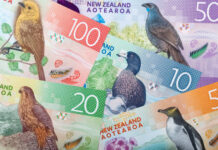Markets
The week started with a quiet but constructive trading session. No news apparently was considered good news. Eco data, if any, were second tier. The EC consumer confidence improved modestly, from -22.0 to -20.9, nothing to get euphoric about. Even so, it didn’t affect the positive equity sentiment. The EuroStoxx50 closed with a gain of 0.75%. This time it was the US indices’ turn to outperform with gains up to 2.01% (Nasdaq). The positive risk sentiment this time didn’t need the support from lower yields. Both US and European yields continued the bottoming out process that started last week. German yields gained between 2.1 bps (2-y) and 3.1 bps (5-y), with swaps slightly underperforming Bunds (swaps + 4.5/5 bps in the 2-10 sector). ECB speakers Kazimir and Vujic took the last opportunities to join the majority mantra that more 50 bps rate hikes will most likely be necessary (ECB blackout period before the February 2 meeting starts tomorrow). Evidently, there is no ECB consensus view, but pleadings from the likes Stournaras to take a more gradual approach for now are only backed by a small minority. The outperformance of US equities also went hand-in-hand with a slight underperformance of US Treasuries. US yields gained between 5.9 bps (5-y) and 1.7 bp (30-y). At 3.51%, the 10-y yield tries to leave the key 3.42/3.32% support area. Recent rise in yields created some breathing space, but for sure still doesn’t bring the curve in line with recent Fed guidance. To be continued. Oil extended its gradual rebound (Brent $88.2 p/b). The comeback in the European reference TTF gas contract (€ 66 p/MWh) remains limited for now.
This morning, China and other regional markets stay closed for the Lunar New Year holidays. Still, sentiment stays constructive in line with the US yesterday. Treasuries are trading little changed. The dollar stays in the defensive (EUR/USD 1.0885, DXY 101.88). Later today, the January preliminary PMI’s take center stage. The EMU composite PMI is expected to continue the gradual bottoming out process that started in November, probably rising from 49.3 to 49.5. An easing of mainly energy-driven prices pressures might provide some breathing space, both for European consumers and companies, potentially translating into a milder economic setback than was expected a few months ago. Question is what a combination of easing prices pressure and hopes for better activity should mean for European markets. In theory it might be a further supportive for European equities, but they already substantially outperformed the US of late. It might also support the euro as it would make it easier for the ECB to fulfill its anti-inflationary commitment. If so, European yields might continue their recent rebound with the 2.25% area a next ST target for the 10-y German yield. Also keep an eye at the US PMI’s. Weaker PMI’s over the previous months sometimes supported market expectations on a softer Fed approach. However, also the US composite PMI is expected to bottom (rebound from 45 to 46.4). Day-to-day momentum still suggests that a test of the EUR/USD 1.0942 level (50% retracement since early 2021) is on cards. EUR/GBP is still locked in a very tight range near 0.88.
News Headlines
Japan’s composite PMI rose from 49.7 to 50.8, back in expansion territory in January. The advance was exclusively driven by a further recovery in the services sector (52.4 from 51.1) thanks to a nationwide travel subsidy programme and the relaxation of Covid restrictions. New orders, backlogs and output all grew stronger than in December. Employment levels however decreased for the first time in year and expectations for the year ahead were less positive due to faster rising input prices. The manufacturing gauge was unchanged at 48.9, signaling a contraction. There were some positive developments though as both output & new orders printed weaker declines than the month before & employment grew stronger. The outlook in the sector turned more optimistic. The Japanese yen appreciates marginally this morning. USD/JPY edges lower from 130.67 to 130.14.
The European Parliament will vote today on a change in banking regulation that would cut the increase in capital requirements on securitisations in half. Securitisation is a liquidity and risk-reducing tool in which assets are bundled into investment vehicles before being sliced in sellable tranches. The technique was barely used in Europe the last 15 years because of the high capital requirements and flurry of disclosure rules. The banking industry hopes that the regulation overhaul will revive the market, offering a more attractive funding source in times of monetary tightening.













